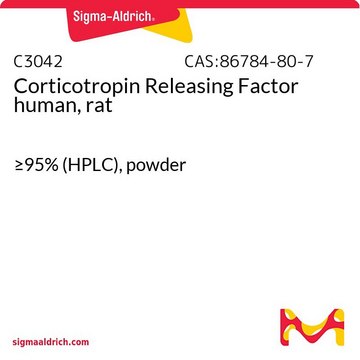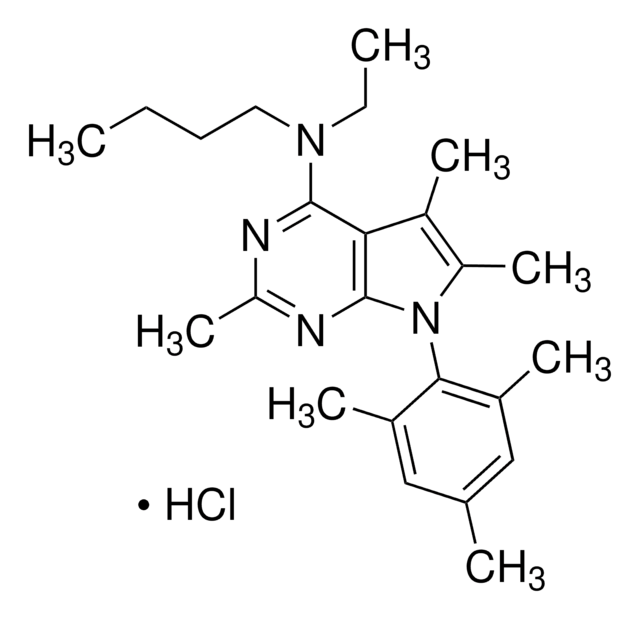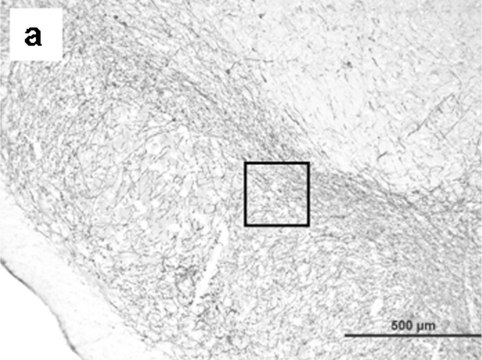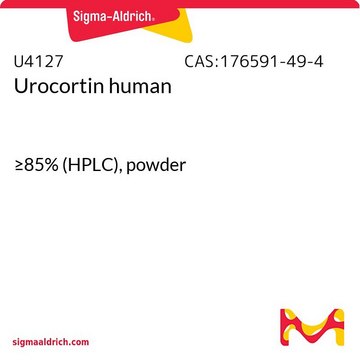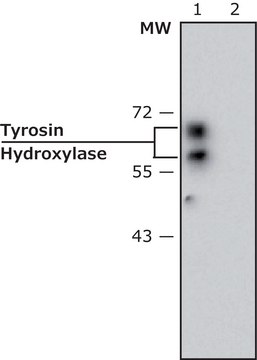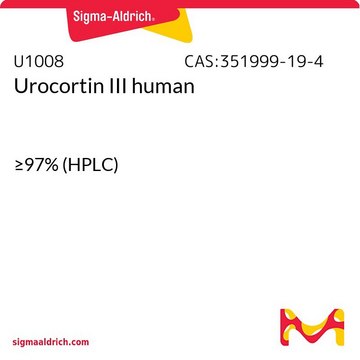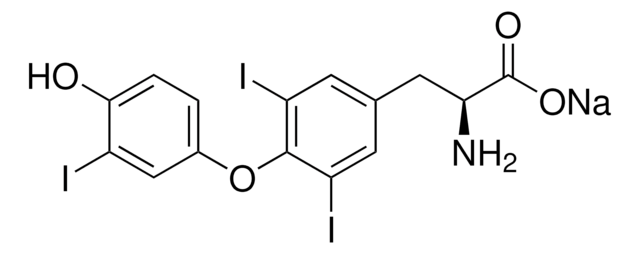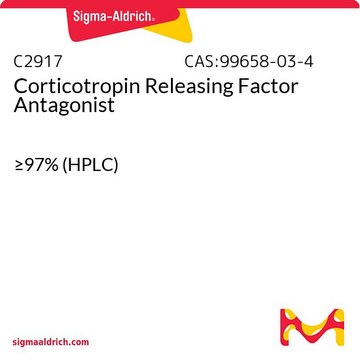推荐产品
生物来源
rat
质量水平
方案
≥97% (HPLC)
表单
powder
技术
western blot: suitable
溶解性
1% acetic acid: >1 mg/mL, clear, colorless
UniProt登记号
储存温度
−20°C
基因信息
rat ... Ucn(29151)
Amino Acid Sequence
Asp-Asp-Pro-Pro-Leu-Ser-Ile-Asp-Leu-Thr-Phe-His-Leu-Leu-Arg-Thr-Leu-Leu-Glu-Leu-Ala-Arg-Thr-Gln-Ser-Gln-Arg-Glu-Arg-Ala-Glu-Gln-Asn-Arg-Ile-Ile-Phe-Asp-Ser-Val-NH2
应用
Urocortin rat can be used for western blotting. The product can also be used for studying that whether CRF receptor type 2 (CRF2) and its high-affinity ligand, urocortin 1 (Ucn1) can mediate sex-specific cellular stress responses by using corticotropin-releasing factor receptor 2-deficient (Crhr2-/- ) and wild-type (WT) mice.
生化/生理作用
Binds to CRF receptor types 1, 2α, and 2β; stimulates cAMP accumulation from cells transfected with these receptors. Acts in vitro to release ACTH from rat anterior pituitary cells.
Urocortin is a CRF-related neuropeptide that binds to CRF receptor types 1α, 2α and 2β. It possesses appetite-suppressing effect. Urocortin along with corticotropin-releasing factor (CRF) binding protein (CRF-BP) enhances the free CRF levels in human brain by displacing hCRF from the binding protein.
制备说明
Urocortin rat dissolves in 1% acetic acid at 1 mg/ml to yield a clear, colorless solution.
其他说明
Lyophilized from 0.1% TFA in H2O
储存分类代码
11 - Combustible Solids
WGK
WGK 3
闪点(°F)
Not applicable
闪点(°C)
Not applicable
个人防护装备
Eyeshields, Gloves, type N95 (US)
法规信息
监管及禁止进口产品
Urocortin interaction with corticotropin-releasing factor (CRF) binding protein (CRF-BP): a novel mechanism for elevating "free' CRF levels in human brain.
Behan DP
Brain Research, 725 (1996)
Eric Kubat et al.
Molecular medicine (Cambridge, Mass.), 19, 212-222 (2013-07-10)
Although females suffer twice as much as males from stress-related disorders, sex-specific participating and pathogenic cellular stress mechanisms remain uncharacterized. Using corticotropin-releasing factor receptor 2-deficient (Crhr2-/-) and wild-type (WT) mice, we show that CRF receptor type 2 (CRF2) and its
M Spina et al.
Science (New York, N.Y.), 273(5281), 1561-1564 (1996-09-13)
The neuropeptide corticotropin-releasing factor (CRF) is well known to act on the central nervous system in ways that mimic stress and result in decreases in exploration, increases in sympathetic activity, decreases in parasympathetic outflow, and decreases in appetitive behavior. Urocortin
Nina C Donner et al.
Progress in neuro-psychopharmacology & biological psychiatry, 96, 109730-109730 (2019-08-16)
The bed nucleus of the stria terminalis (BNST) is a nodal structure in neural circuits controlling anxiety-related defensive behavioral responses. It contains neurons expressing the stress- and anxiety-related neuropeptide corticotropin-releasing hormone (Crh) as well as Crh receptors. Repeated daily subthreshold
A De Luca et al.
European journal of histochemistry : EJH, 53(3), 167-176 (2009-10-30)
Urocortin (UCN) is a 40 aminoacid peptide which belongs to corticotropin-releasing factor (CRF) family. This family of peptides stimulates the secretion of proopiomelanocortin (POMC)-derived peptides, adrenocorticotropic hormone (ACTH), beta-endorphin and melanocyte-stimulating hormone (MSH) in the pituitary gland. In the present
我们的科学家团队拥有各种研究领域经验,包括生命科学、材料科学、化学合成、色谱、分析及许多其他领域.
联系技术服务部门